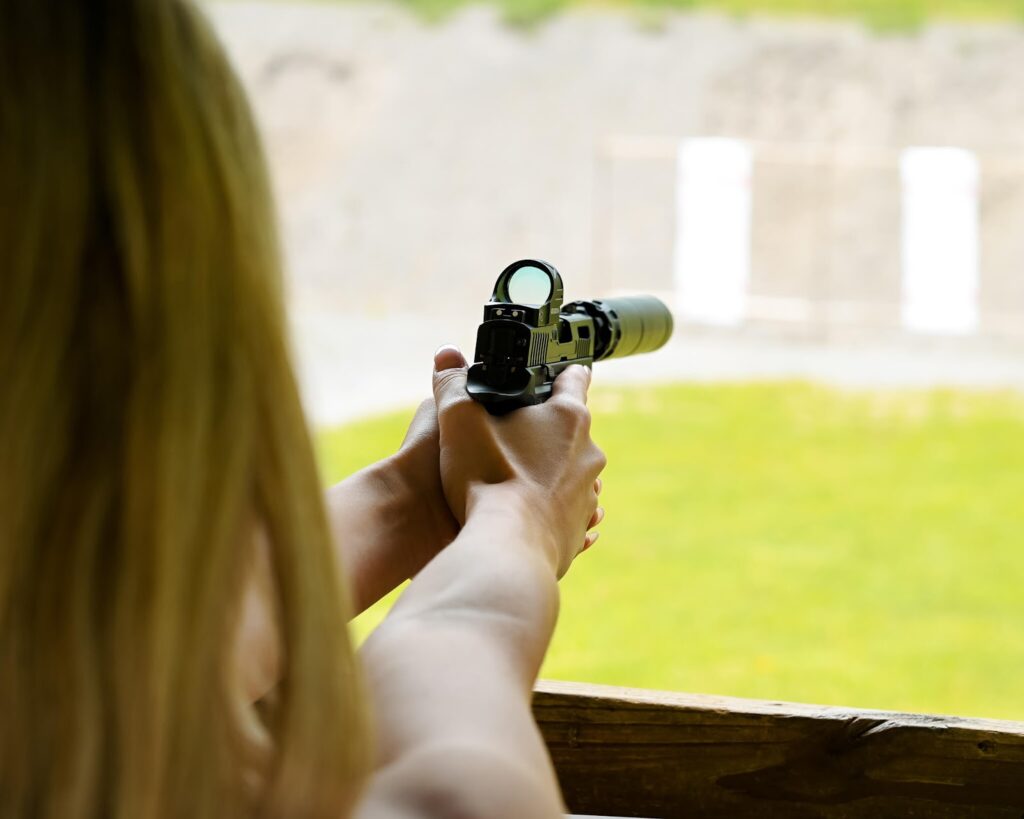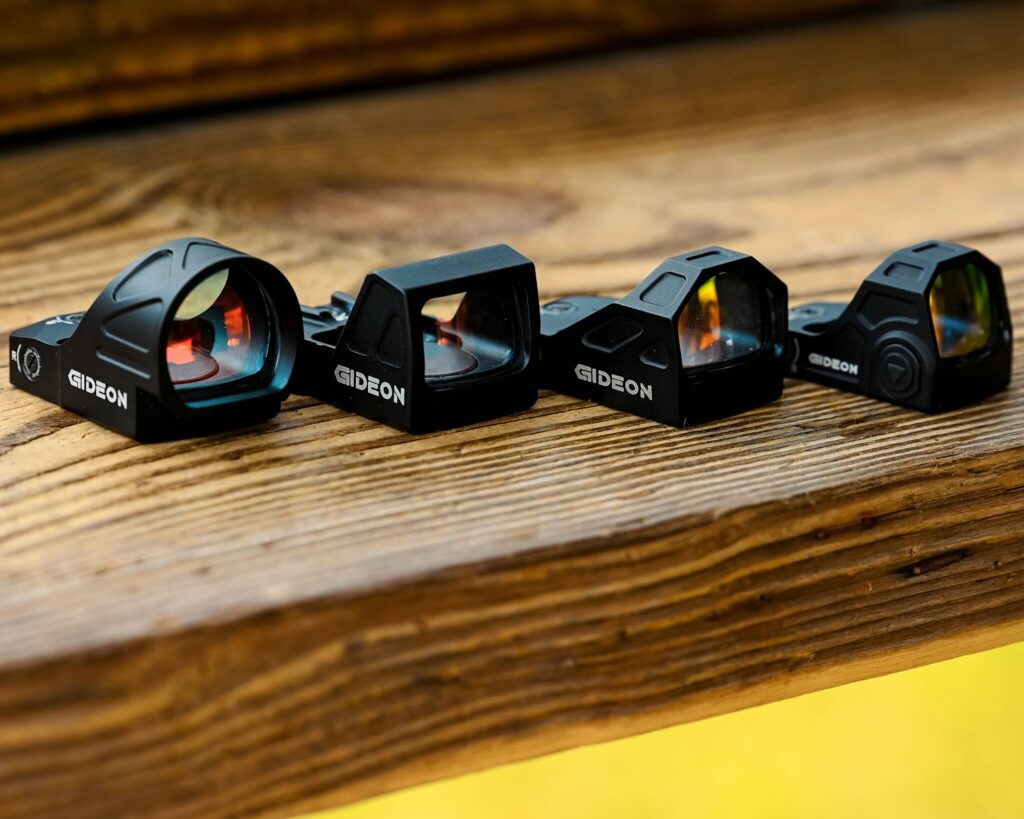0

If you need better accuracy and faster target acquisition after the sun goes down, using a red dot sight in low light conditions couldn’t be easier. With properly adjusted brightness, your red dot is perfect for day and night shooting or transitioning between the two. Modern red dot optics are also compatible with popular night vision systems, giving you greater tactical flexibility for protecting and serving in the line of duty or protecting your family in the middle of the night. With a little planning and effective training, your red dot is ready to help you aim better when the lights go out.
Using red dot sights has become a popular way to upgrade the sight picture on pistols, carbines, and shotguns because they make aiming almost as easy as point and shoot. These reflex sights use powerful LED emitters to project a bright dot or reticle onto a specially coated lens. Looking through the lens, the reticle appears to float in the air, overlaying the target in your sight picture. Simply line up your reticle for shot placement, and you’re ready to fire.
Our eyes evolved to work in a variety of lighting conditions thanks to pupils that dilate and contract to gather more or less light. As ambient light sources dim, our pupils open wider to take in as much of the available light as possible. While we still lose some definition to a degree that varies from individual to individual, we’re able to see well enough, especially in familiar environments like our own living rooms, to navigate with only the occasional stubbed toe. However, there is a big difference between navigating and finding an accurate aiming point with red dot sights vs. traditional iron sights.
Red dots have a mixed reputation for night shooting, largely due to misuse or misunderstanding of the technology. The truth is that using a red dot sight in low light can give you a significant tactical advantage, but you have to prepare and train for it as with any other firearms skill. Here are a few tips to help you get your gun ready.


As the civilian market’s entry-level price tag for night vision equipment drops, more gun owners are looking for compatible red dot sights. Image intensification systems amplify the ambient light reflecting from objects (including some wavelengths the naked eye can’t see) and present it as an image within our viewable spectrum. Our adjustable brightness settings feature eleven different brightness gradients, including two night-vision-compatible modes at the lower end of the brightness scale. Aim the weapon either through your night vision system’s monocular lens or the dominant side lens and fire as normal. If the ambient light changes, such as if someone turns on the light in a darkened room, simply remove or flip up your night vision system and go back to using your red dot as normal.
We’re proud to offer high-performance optics with the features you need for better shooting, day or night. They’re engineered for accuracy, built for real-world use, and priced to take aim at targets, not your bank account. Sign up for our email list to get product news about new optics and special pricing. Order your red dot sights from Gideon Optics today.
🕛 Ends 5/26 at 11:59pm. No code needed. Not valid with other coupons or discounts.